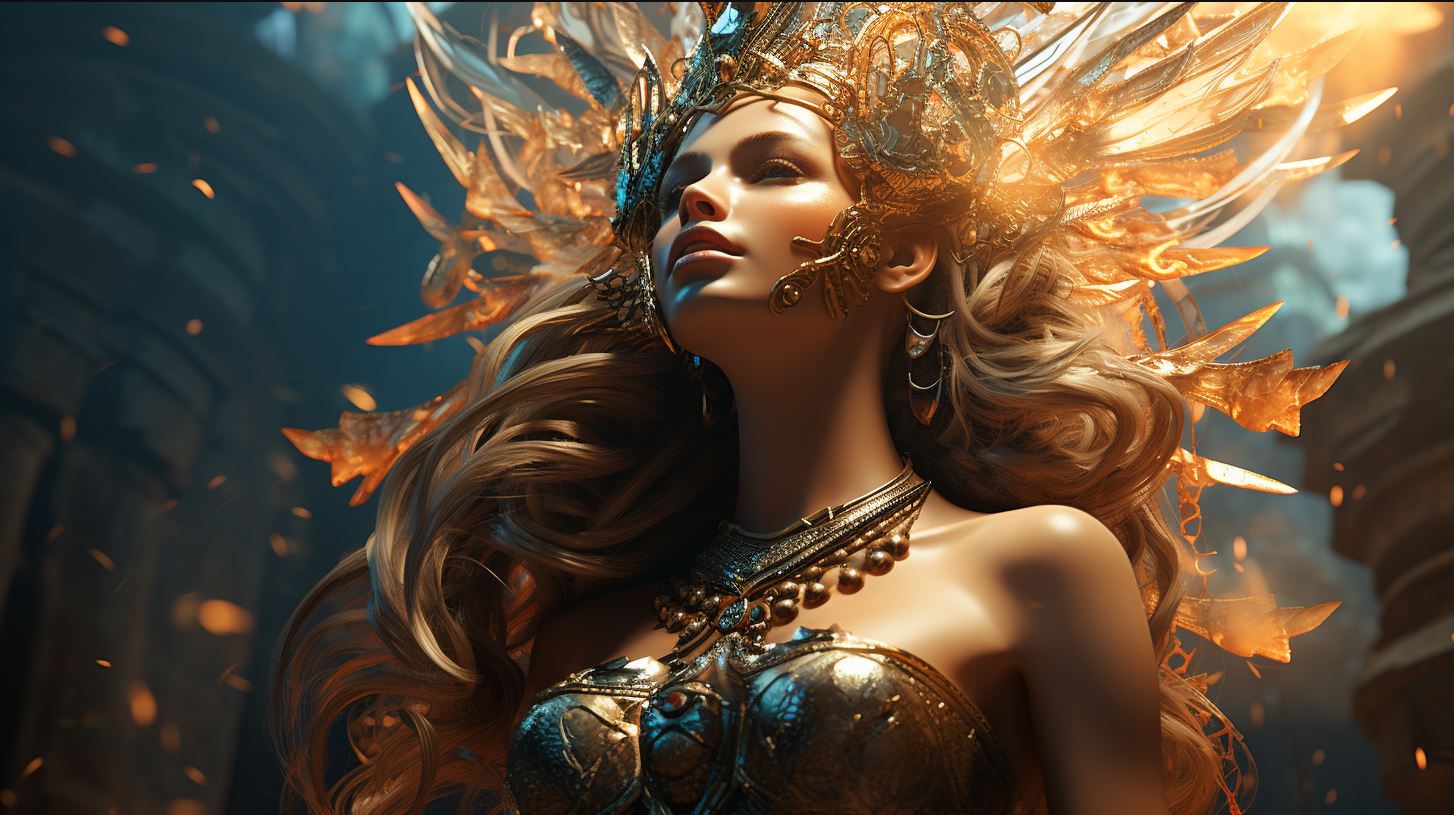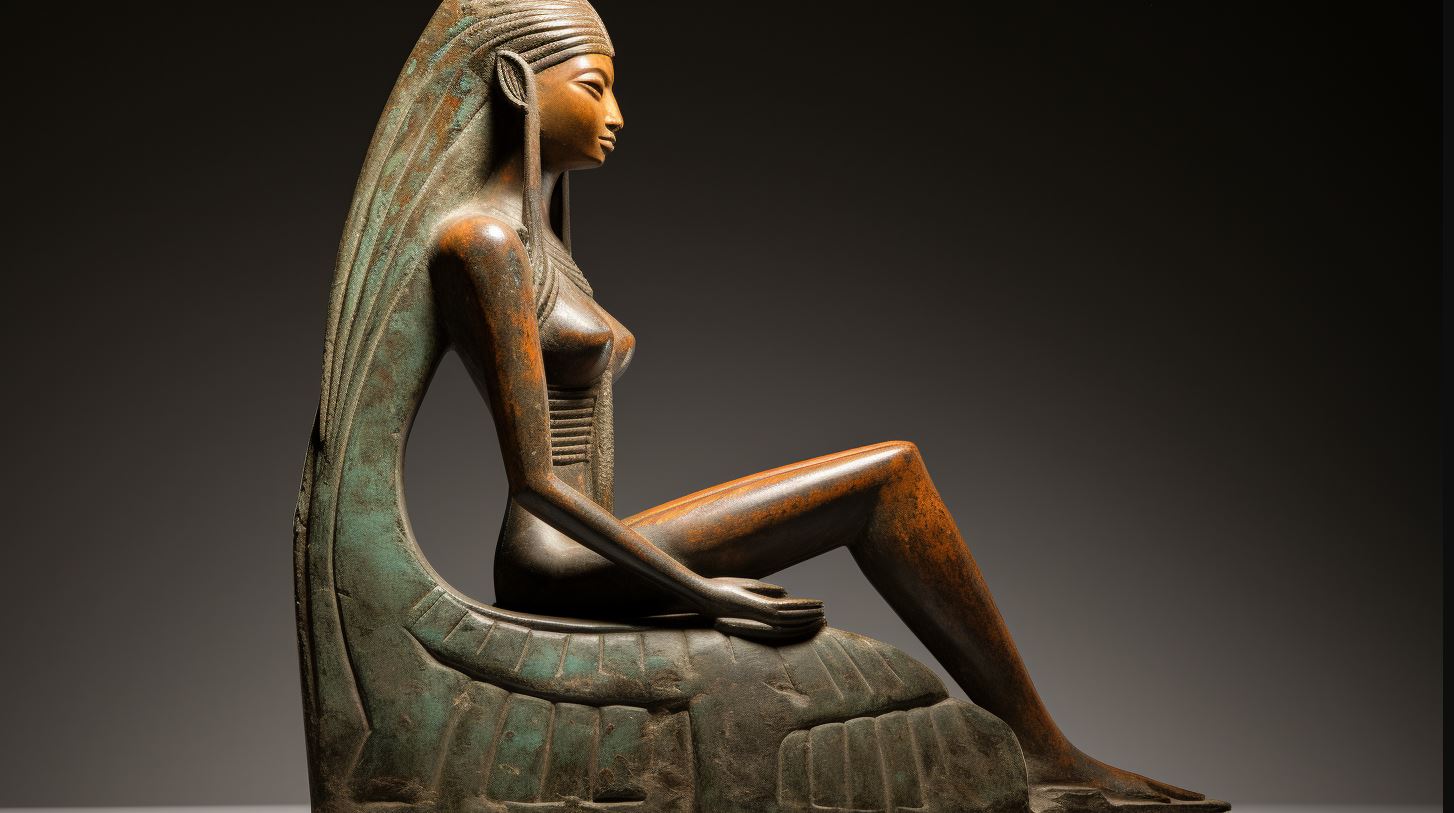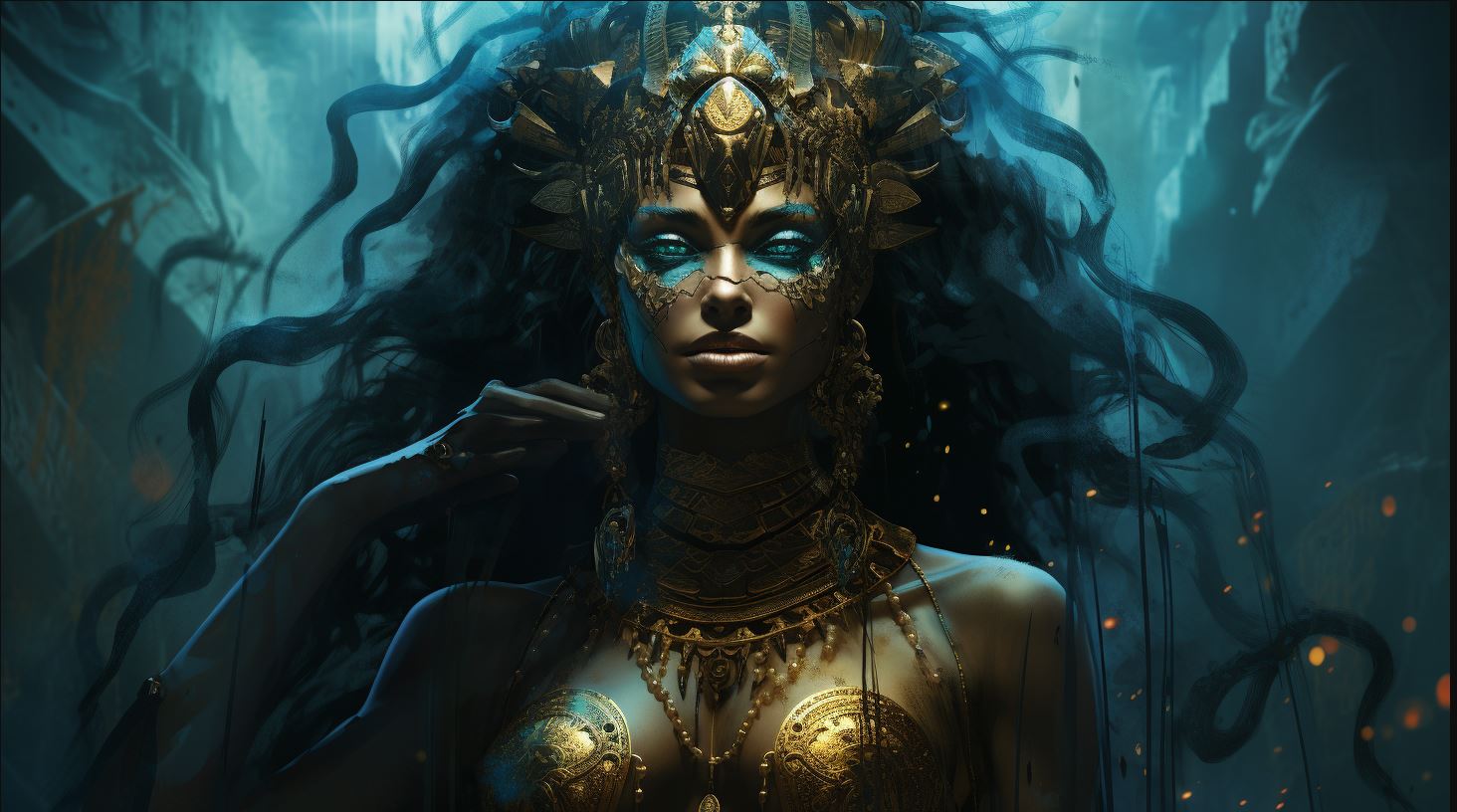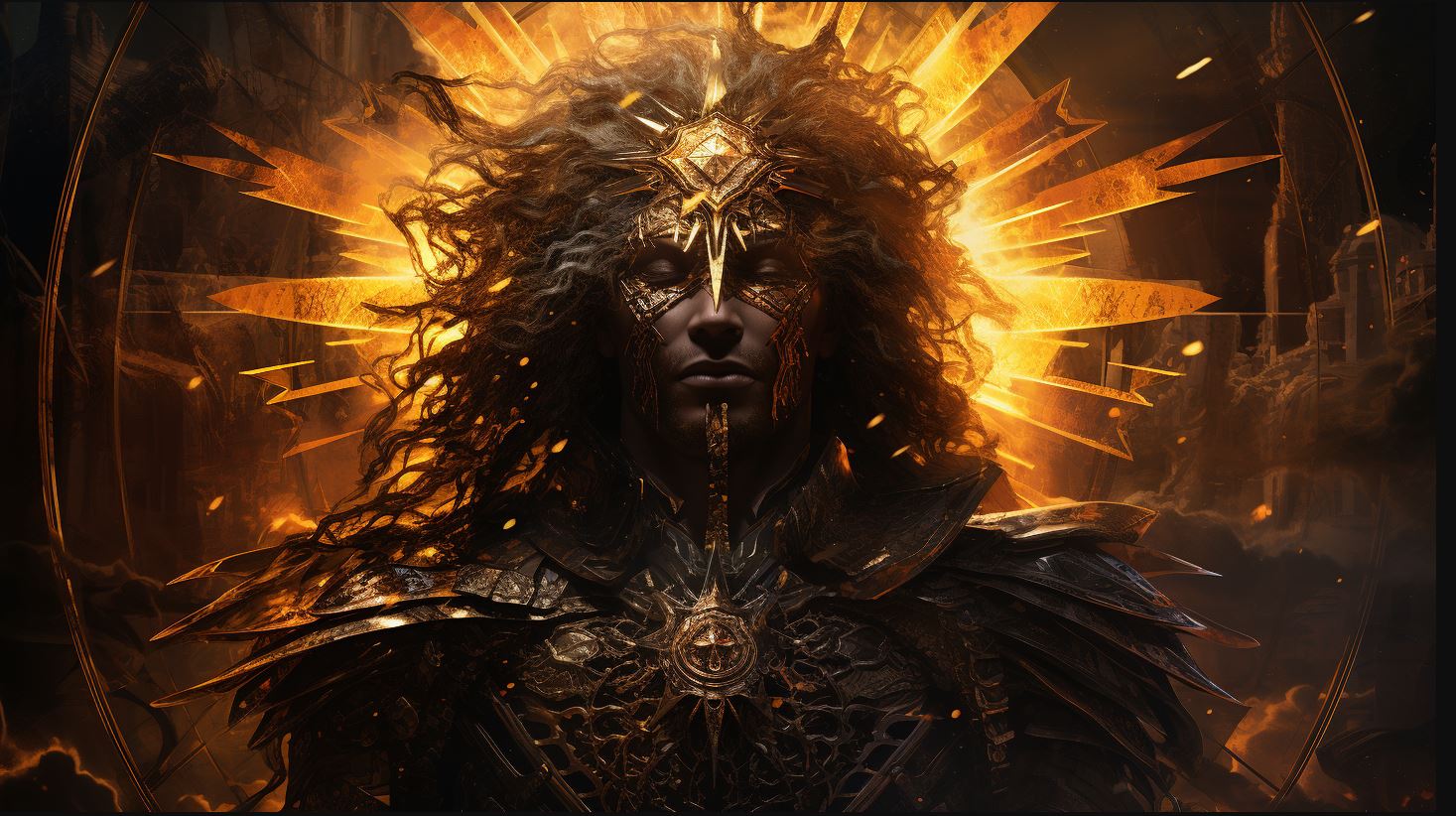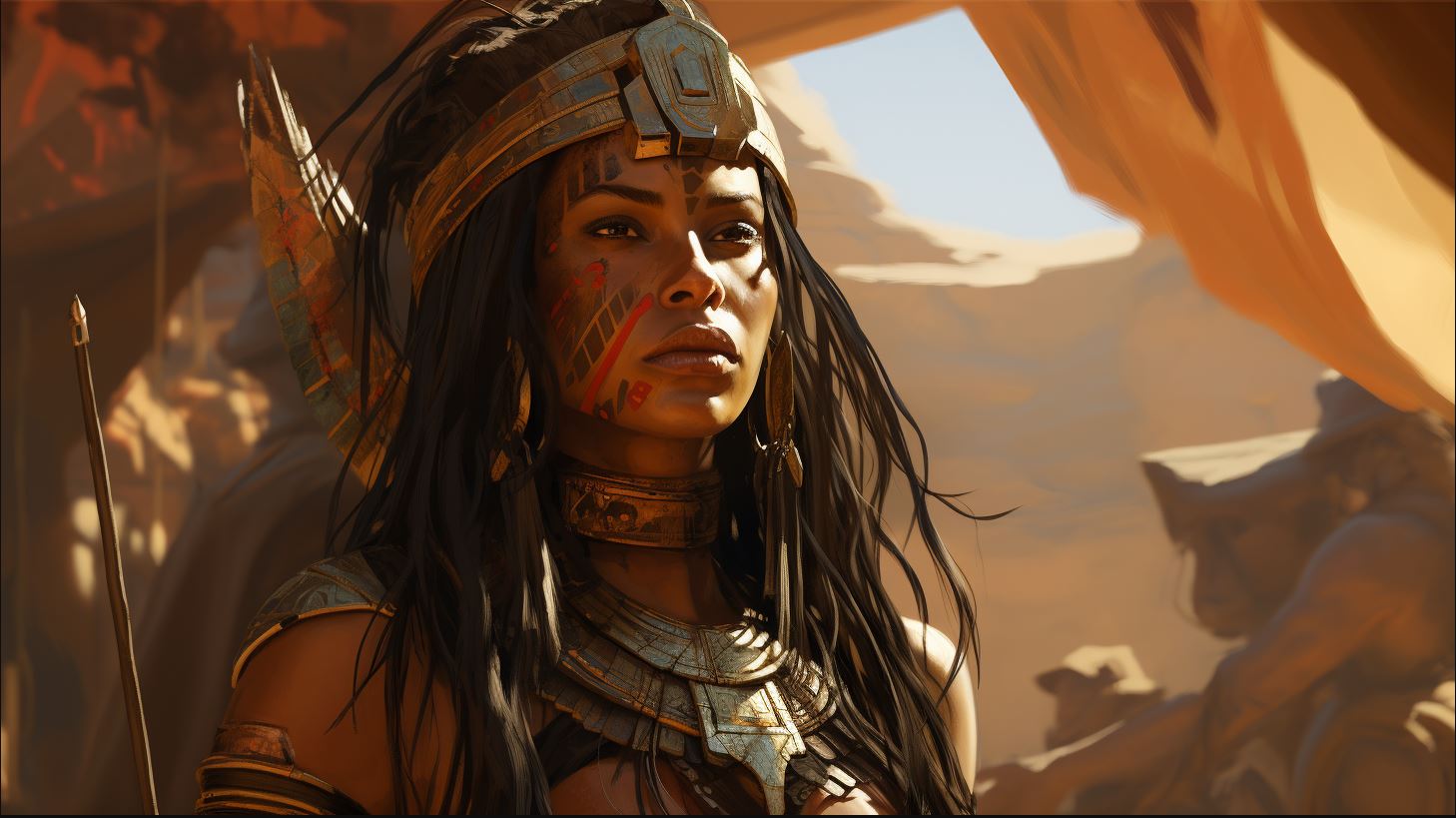Astarte Phoenician Goddess: Unveiling the Rich History and Legends
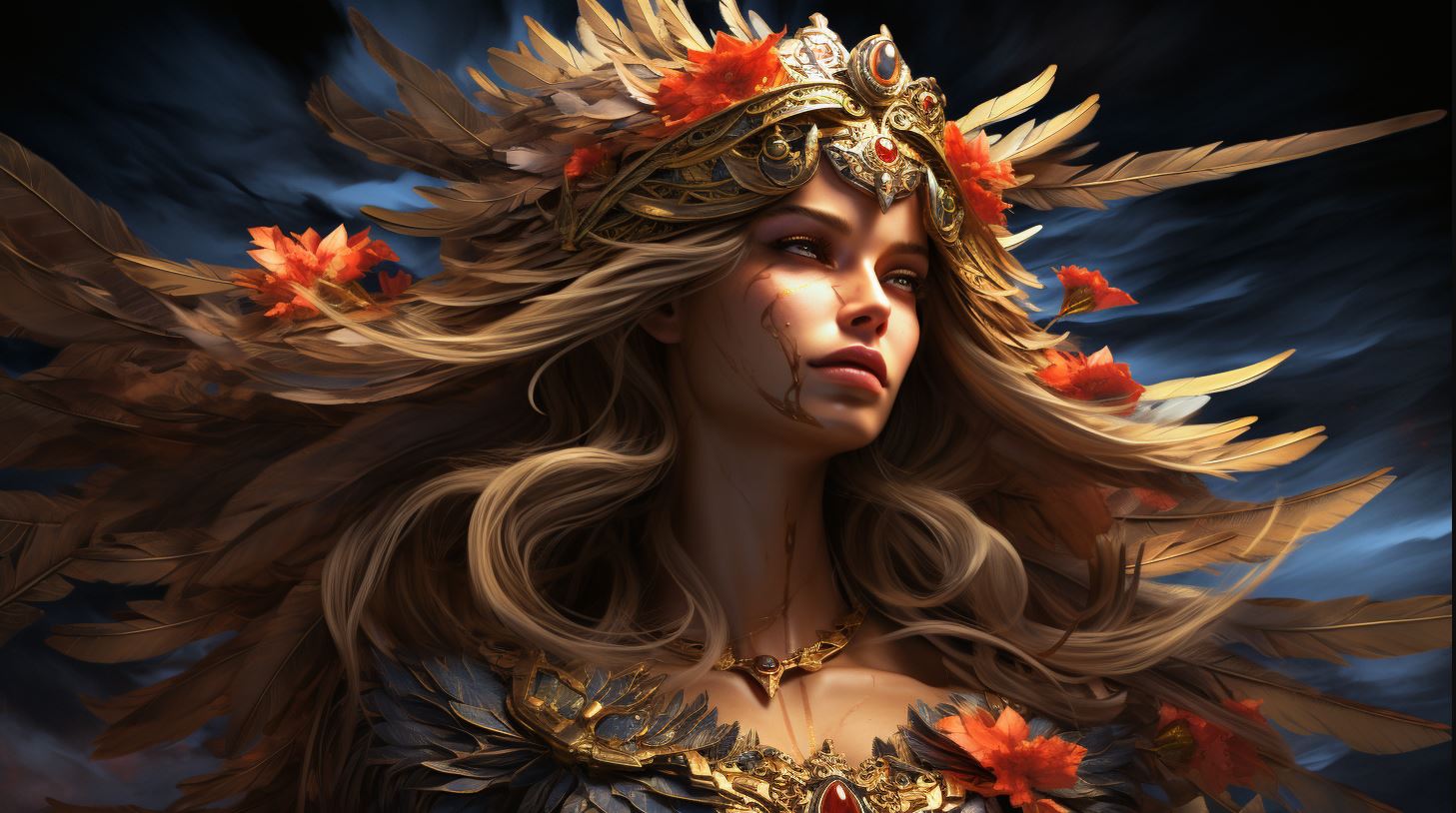
Astarte Phoenician Goddess holds a significant place in ancient Phoenician mythology and religious traditions. As an integral part of the Phoenician pantheon, Astarte’s origin and role have fascinated scholars for centuries.
From her connections with other deities like Baal and Anat to her lasting influence on Mediterranean cultures and beyond, Astarte’s story unveils a fascinating glimpse into Bronze Age beliefs.
Today, Astarte continues to captivate modern interpretations and her relevancy remains impactful in contemporary culture.
Origins and Significance of Astarte Phoenician Goddess
The Phoenician Pantheon: A Brief Introduction
The Phoenician pantheon comprises a diverse array of gods and goddesses, each with their own unique characteristics and roles. Within this pantheon, Astarte emerges as a prominent figure, esteemed for her significance in religious and cultural practices.
As we explore the origins and significance of Astarte, it is crucial to understand the broader context of the Phoenician pantheon and its impact on ancient society.
Astarte in Ugaritic Texts: Exploring Her Name and Role
Through the study of Ugaritic texts, scholars have gained insights into the name and role of Astarte.
These ancient writings mention her under various names, such as Asherah and Lady of the Sea. Astarte is often depicted as a powerful goddess associated with fertility, love, and war.
Her multifaceted nature and various epithets shed light on the depth of her influence within Phoenician culture and beyond.
The Late Bronze Age: A Period of Prominence for Astarte
During the Late Bronze Age, Astarte attained unprecedented prominence within Phoenician society.
This period witnessed a flourishing of trade, maritime exploration, and cultural exchange, all of which contributed to the spread of Astarte’s worship. As cities across the Mediterranean embraced the goddess, her cult gained traction and became deeply ingrained in the religious fabric of the time.
The Late Bronze Age marks a pivotal era in Astarte’s journey, elevating her to a deity of great importance and reverence.
Astarte and her Association with Other Deities
Astarte, the Phoenician goddess, had intricate connections and associations with various other deities in ancient mythology.
These relationships shed light on the significance and multifaceted nature of Astarte’s character within the pantheon. Let’s explore three remarkable aspects of her associations:
Astarte and Baal: Unraveling their Connection
One of the most prominent associations in Phoenician mythology was between Astarte and Baal, the storm and fertility god.
Within the Ancient Near East, a fascinating triad of female deities emerged with Anat, Ishtar, and Astarte at its core. These powerful goddesses represented different aspects of femininity and played vital roles in various cultures.
Anat embodied the warrior aspect, Ishtar symbolized love and fertility, while Astarte represented sensuality and beauty. Together, they formed a trinity that encapsulated the diverse facets of female power and influence.
Astarte and the Greek Influence: The Goddess Aphrodite
The intermingling of Phoenician and Greek cultures resulted in the identification of Astarte with the Greek goddess Aphrodite. The similarities between the two deities, such as their associations with love, beauty, and fertility, led to their assimilation.
The spread of Hellenistic culture further solidified the connection between Astarte and Aphrodite, intertwining their worship and attributes in various areas.
These associations with Baal, Anat, Ishtar, and Aphrodite demonstrate the widespread influence and interconnectedness of Astarte with other prominent deities.
These intricate relationships further enrich our understanding of the multifaceted nature of Astarte and her significant role within the divine pantheon.
The Cult of Astarte throughout the Mediterranean
The worship of Astarte, the Phoenician Goddess, spread throughout the Mediterranean, leaving a lasting impact on various cultures and societies. This section explores the different aspects of her cult, including the rituals and practices, her role in Hellenistic society, and her influence on ancient Egypt and Greek city-states.
Worship and Rituals: How Astarte Was Honored
Astarte’s worship involved elaborate rituals and ceremonies that varied across different regions. Followers would gather in dedicated temples, adorned with statues and symbols representing the goddess. Offerings of incense, flowers, and food were made to appease and honor Astarte.
These rituals often included music, dancing, and chanting as forms of devotion.
Astarte was also associated with fertility and love, and her worship included rituals aimed at promoting these aspects of life.
The integration of Astarte into Greek culture led to her identification with the Greek goddess Aphrodite. This syncretism created a new divine figure that embodied both the Phoenician and Greek interpretations of love, beauty, and fertility.
Astarte’s Influence on Ancient Egypt and Greek City-States
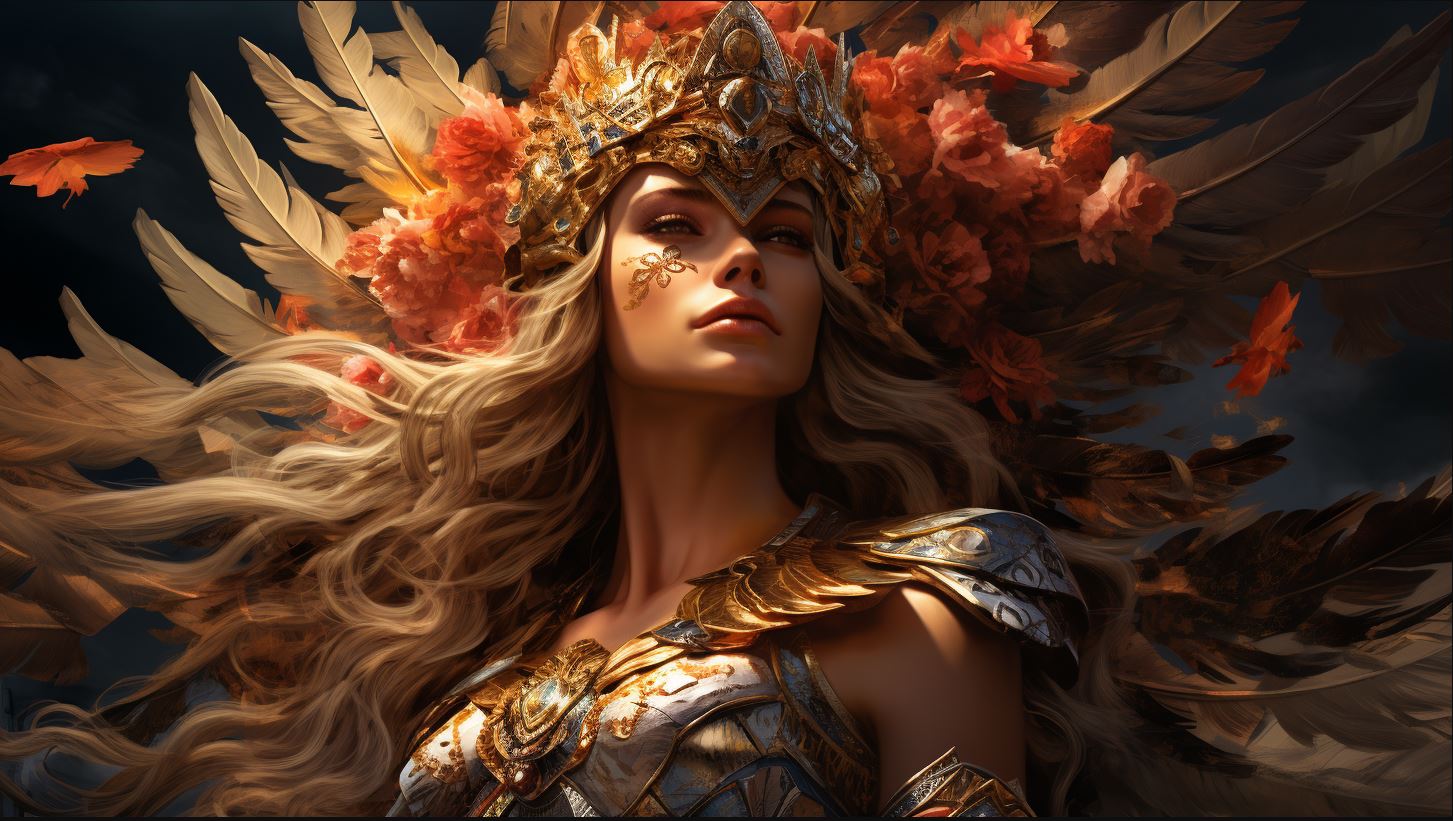
Astarte’s cult had a significant impact on ancient Egypt and Greek city-states, where her worship coexisted with the local deities. In ancient Egypt, she was equated with the goddess Isis, and her cult merged with the existing religious practices of the region.
Astarte’s influence in Egypt can be traced through various inscriptions, temple reliefs, and artifacts.
In Greek city-states, Astarte’s presence can be seen in the form of sanctuaries dedicated to her, particularly in areas with strong Phoenician connections.
These sanctuaries served as focal points for the worship of Astarte and facilitated cultural exchange between the Phoenician and Greek communities.
The cult of Astarte throughout the Mediterranean reveals the widespread reverence for this powerful goddess and the cultural exchanges that occurred as a result of her worship.
The rituals, her role in Hellenistic society, and her influence on ancient Egypt and Greek city-states all contribute to the rich tapestry of Astarte’s legacy in the region.
Astarte in Historical Context
Astarte, the Phoenician Goddess, holds a crucial place in history and is deeply intertwined with various aspects of ancient societies.
Exploring her historical context unveils fascinating connections to royal courts, art, iconography, and her legacy as a warrior goddess in the Bronze Age.
Astarte and the Royal Courts: King Solomon’s Connections
Within the historical context, Astarte’s influence extended to the royal courts of Kings, notably including King Solomon.
Her prominence in the Phoenician pantheon made her a focus of attention and reverence among ruling elites.
King Solomon, renowned for his wisdom and alliances, established diplomatic relations and engaged in trade with Phoenician city-states.
Through these interactions, he encountered the worship of Astarte and her significance in various religious practices, ultimately leading to her presence within the royal court.
Astarte’s Influence on Art and Iconography
The impact of Astarte on art and iconography is evident in the wide array of depictions that have survived through the ages.
From ancient sculptures to intricate jewelry, Astarte’s image became a popular subject, depicting both her beauty and strength.
Artists of the time embraced Astarte’s symbolism, portraying her with attributes and symbols associated with fertility, love, and war.
These depictions not only served religious purposes but also reflected cultural ideals and societal values.
Astarte’s Legacy: The Warrior Goddess in the Bronze Age
One of the most intriguing aspects of Astarte’s historical context is her role as a warrior goddess during the Bronze Age. She embodies strength, courage, and protection, standing as a formidable figure amidst a time of political and military turmoil.
Her worshippers sought her favor and invoked her power in times of conflict, believing she could grant victory and safeguard their communities. Astarte’s legacy as a warrior goddess resonated throughout the region, leaving a lasting impression on the societal fabric of ancient civilizations.
Astarte Phoenician Goddess Today
Astarte Phoenician Goddess continues to leave an indelible mark on contemporary culture, with modern interpretations and a revival of her worship. Her timeless appeal and enigmatic nature have garnered a renewed interest in recent years, leading to a resurgence of devotion and exploration of her significance.
Let’s delve into the various aspects that highlight Astarte’s relevance in the 21st century.
Modern Interpretations and Revival of Astarte’s Worship
In today’s world, Astarte’s worship has found new life, attracting those seeking a connection to ancient spiritual traditions. Devotees and scholars alike are revisiting historical texts and archaeological artifacts to unearth clues about her rituals and beliefs.
Contemporary interpretations of Astarte draw inspiration from the past while incorporating modern practices, emphasizing her role as a goddess of love, fertility, and war.
The revival of Astarte’s worship has also led to the establishment of dedicated temples and rites.
Followers seek solace and guidance through ceremonies honoring the Phoenician goddess, invoking her presence and wisdom. These communities provide a space for individuals to explore their spiritual connection with Astarte and participate in communal celebrations.
Astarte’s Relevance and Impact on Contemporary Culture
Astarte’s influence extends beyond religious practices. Her portrayal in literature, art, and popular culture serves as a testament to her enduring legacy. Authors and artists draw inspiration from Astarte’s mythos, weaving her stories into contemporary narratives.
Her portrayal in films, novels, and visual art helps introduce her to wider audiences and sparks interest in her ancient origins.
Astarte’s figure has also become a symbol of female empowerment and strength, resonating with individuals looking for icons that embody courage and independence.
She represents a divine feminine archetype, empowering women to embrace their own inner power and assertiveness.
Astarte’s Continued Presence: Exploring Her Influence in the 21st Century
- Astarte’s depiction in jewelry and fashion, such as amulets and pendants, showcases her enduring appeal as a symbol of beauty and protection.
- In esoteric and occult practices, Astarte remains a figure of fascination, with rituals and spells invoking her energy for various intentions.
- Astarte’s association with fertility continues to resonate in modern discussions surrounding reproductive rights and women’s health.
- Her connection to war and battle is reexamined through the lens of female warriors and military leaders, highlighting her influence in challenging traditional gender roles.
Astarte Phoenician Goddess occupies a significant place in our collective consciousness, transcending time and geography.
Today, she continues to captivate minds, incite curiosity, and inspire artistic expressions that keep her divine essence alive and thriving in the modern world.
…











